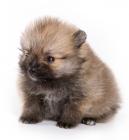German Spitz
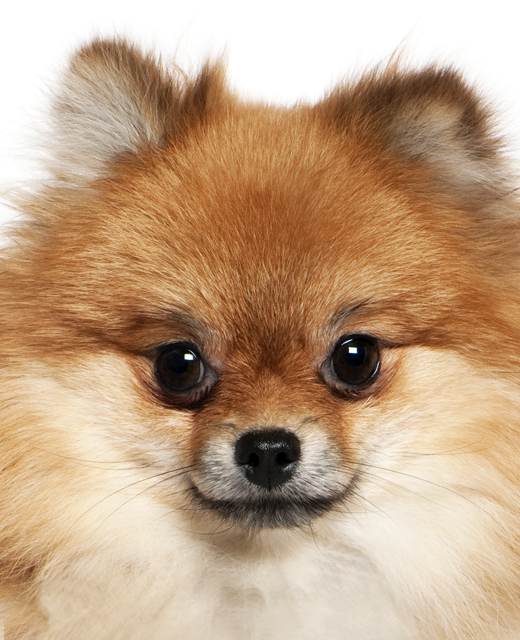
In my own words
Look at my tail. Look how fluffy and curly it is! Yes I know you’re giving me all those admiring glances, and that’s why I’m often a show dog. You probably see lots of types of me at Crufts. If you want a dog to act as a door bell, I can do that job for you as well. I am very protective of my owner and I will let them know if you’re near them. They are my pack leader, and they’ve trained me so that I know whatever I do; they’re still in charge. There’s lots of different types of my breed and it can be quite confusing; but I do know we all descended from Germany – and I’ve got some Scandinavian blood as well.
There is a type of us that fashionable people like to carry around in their handbags in California, that seems like a nice life to me, just sitting around in someone’s bag; but then again I do like going on the odd long walk from time to time. It can be quite fun poking around.
My ideal owner(s)
Older People
People who live in the city
People who can take charge
Couples
What they say about me
Fashionable
Fluffy
Bark a lot
Good watchdog
Is this German Spitz for you?
Test your knowledge about the German Spitz
Information essential about the German Spitz
The term ‘German Spitz’ can actually refer to many different types of dog that are of the German Spitz origin. Some of them are classed as single breeds while some are still grouped together; confusingly, this can even vary from national kennel club to national kennel club! In general, however, this article will concern itself with any of these dogs that have descended from the ‘German Spitz’ breed according to the International Federation of Kennel Clubs. The main sub-breeds include (according to the International Federation of Kennel Clubs):
· The Keeshond (as it’s known by the British Kennel Club) or Wolfsspitz, a grey coloured dog that is roughly 43-55cm from floor to withers. It has a very fluffy, plush coat and curly tail – a common trait among other German Spitz types.
· The Giant Spitz, a larger sub-breed of the Standard Spitz. 42-50cm from floor to withers, and can be white, brown or black.
· The German Spitz (Mittel). 30-38cm floor to withers and come in a variety of different colours. This article will deal primarily with this type and to avoid confusion, if I am referring particularly to the German Spitz (Mittel) in this article (say, if I am discussing the dog’s features or weight), I will call it the ‘Standard Spitz’. From the ‘Standard Spitz’, other sub-breeds have also developed; including the American Eskimo Dog.
· German Spitz (Klien). 23-29cm floor to withers. Also comes in a variety of different colours. Again to avoid confusion I shall call the German Spitz (Klien) the ‘Miniature Spitz’, if I am referring to this sub-breed particularly.
· The Zwergspitz. A tiny version of the German Spitz only 18-22cm from floor to withers. Comes in a variety of colours. If I am specifically referring to this sub-breed I will call it by its common English: the ‘Pomeranian’. These types of dogs were made famous by Queen Victoria. To further add to the Spitz confusion, Pomeranians are classified as a completely separate breed by the UK Kennel Club (The UK Kennel Club is not part of the International Federation of Kennel Clubs).
Generally, any dog that is a Spitz type and of which its origins can be traced back to Germany are ‘German Spitz’.
Weight:
The Standard Spitz is roughly 23-41 pounds (10.5-11.5 kg.)
Popularity:
Popularity varies from sub-breed to sub-breed. The Standard Spitz is becoming are rare breed, even in Germany. Pomeranians, on the other hand for example, are very popular; especially in the United States were they have become very fashionable and are currently in the top 15 most popular dogs.
Breed History:
European Spitzen have a very long history, and the existence is thought to go back more than 6000 years. They are thought to have descended from thick coated Scandinavian herding dogs, specifically the Samoyed and Lapphund; and bought into central Europe by Vikings. The earliest literary reference is to the Spitz is in 1450. As the name suggests, the modern-day German Spitz originated in Germany and up until the 19th century, this adaptable breed was bred in Germany to be a hunter, herder and watchdog. Over the years, different communities bred different types of Spitz dogs, and this has what caused the many sub-types we see today. All of these sub-breeds have been bred for specific purposes, for example the Standard Spitz was bred to be a watchdog, while the Pomeranian has was bred to be a companion and lapdog. As I’ve already mentioned, the Pomeranian (named after the Pomorania area of Germany) became very fashionable in 19th century England due to being a favourite with Queen Victoria. The smaller the Pomeranian, the more of a fashion statement the dog was thought to be, so Pomeranians were eventually bred to become smaller and smaller. In early 20th century America the Standard Spitz was bought over, mixed with both the Keeshond and Pomeranian and developed into a sub-breed known as the ‘American Eskimo Dog’. Early experts originally thought that German Spitzen were, in fact, the oldest dog breed (due to their shape resembling old fossils), but modern genetic evidence now disproves this theory.
Character:
The German Spitz is a fairly energetic, playful breed with a slightly higher than average intelligence. They are very curious and will like to go on searches while on walks, as well as poking around areas that they are not familiar with. They are loyal to their owners, and this can cause them to become suspicious of strangers. Because of this they make excellent watchdogs, and do enjoy a good bark. This can get out of hand, but with good training this can be honed so that they bark when visitors come to the door and then keep quiet thereafter. They are very playful, and like to stand on their hind legs; a trick that they can learn to do on command. They, especially the Pomeranian, are a regular staple at dog shows such as Crufts, and they feel very at home on the show floor. They can be lively, especially when young, but they are also sensitive and require much human attention and petting!
Temperament:
Due to their fierce loyalty, and the fact that they have been bred to be watchdogs, proper training of German Spitzen is essential. The dog will need to learn from a young age who is boss and the pack leader (that’s you!) otherwise it will lose interest and will not listen to what you are telling it to do. It cannot be emphasised enough how important it is that the dog learns that it is the humans who are in charge; otherwise they will become very nervous and suspicious around other animals, other humans and, particularly, children - as most children do not have the ‘natural’ command of the animal most adults do. The best way to think about this type of training is to imagine yourself as the ‘pack leader’ as if the dog was in the wild; that way it will learn who is in charge. In general, though, this type of dog, while a little bit difficult to train sometimes, is not overly aggressive or hyperactive or a handful (just temperamental if not trained properly) – and as such it could suit an elderly person.
Conformation:
Spitzen are well known for their show potential and as such they should look proud and lively. They are Medium-sized, sturdy and fluffy with a slightly round head, straight nose and pointy ears. They always have dark eyes, and should constantly look alert. Its coat is rough, profuse and puffy, with multiple layers, while its feathered tail curls over the back. The curled tail is perhaps the most unique aspect of the breed, and this should look healthy and prominent. The dog should be able to straighten and wag its tail without problem. The Miniature Spitz is of similar appearance, but smaller and the Larger Spitz is similar but, well, larger. Keeshonds are also similar, and the main difference between them and the Standard is their coat colour. Pomeranians are much smaller compared to the other breeds and should not be confused with the Miniature.
Colour:
The German Spitz come in a variety of colours:
· Keeshunds are grey or black
· The Large Spitz are white, brown or black.
· The Standard Sptiz and Minature can be white, brown or black, orange, grey-shaded and other colours.
The Pomeranian can be orange, cream, black, white, sable and a combination thereof
Training:
Pack-leader’ training is essential with the German Spitz. If trained properly, though, they will make great companions.
Exercise: The breed, especially the smaller versions, make for excellent apartment pets as they only need a relatively small amount of exercise. They do need daily exercise, and if you would like to go running with them then they do like that too. But they don’t require the amount of exercise, say, most gundog breeds require
Care:
This breed has a very thick coat, and this will require much attention. They sometimes do not like to be groomed, and they need to be trained to be able to.
Health:
The Standard German Spitz suffers from relatively few genetic health problems. The Pomeranian, while generally a healthy dog, does suffer from problems associated with breeds that have been bred for their size; and this includes issues with the kneecaps slipping. It is a good idea to get a vet to give the dog a regular health check. Overall though the breed is very healthy and most Standard Spitzen will live the average 13-15 years.
You may also like:
If you like German Spitzs, you may be interested in breeds of the same size »


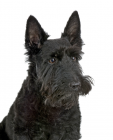
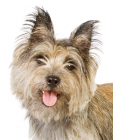

If you like German Spitzs, you may like other breeds with similar characteristics »

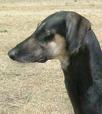
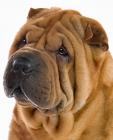
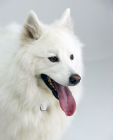
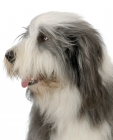
Advice on choosing your breed »
Find an animal shelter or rescue home where a German Spitz is waiting for a new home »
The following grid gives a fast track review which covers all breeds. You can apply it to help you decide if a German Spitz is suitable for you, the environment where you live, your personality and your lifestyle. On the grid, 1= strongly disagree, and 5= strongly agree.
Be the first to rate this breed »
|
*PLEASE NOTE: All our breed profiles are general, and all dogs are individuals. Always talk to the breeders and meet the owners you are buying from. Try to meet the dog and its parents if it is a puppy in their home environment.









